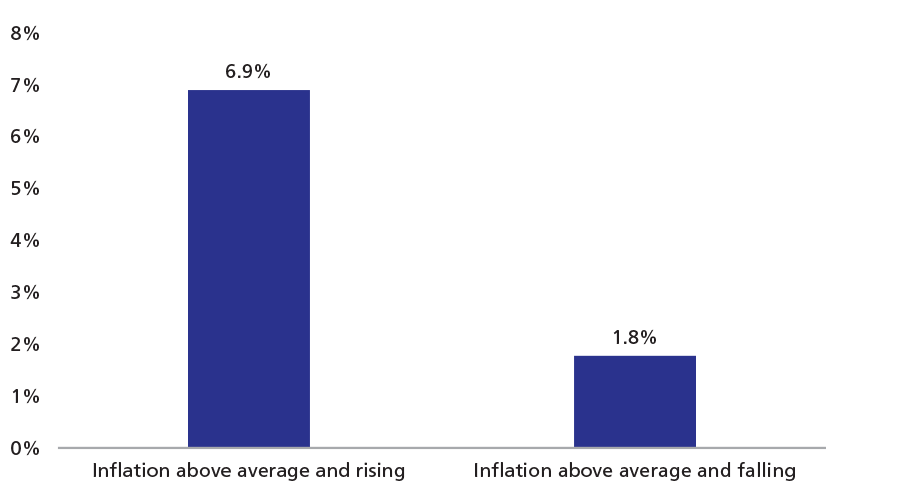2023: a turning point for climate action?

|
Written By: David Crawford |
David Crawford of Nordea Asset Management UK points out the benefits of real assets and sustainable real assets, which can provide an interesting solution to investors seeking a trade-off between achieving ESG impact and financial gains
The events of the past year have undoubtedly brought geopolitical uncertainty and stubbornly high inflation, while the dominant theme was the aggressiveness of the central banks in a bid to counter the latter. As we look at 2023, uncertainty still hangs in the air. Nonetheless, there has been evidence that inflation, while still above average, is cooling off, energy prices are declining and that we are likely past peak hawkishness. It is therefore time to focus on making 2023 a turning point in endeavours to tackle one of the great challenges of our time: energy transition.
The passing of the Inflation Reduction Act (IRA) in the United States has brought new excitement into the renewables industry, not only in the US but also in Europe. The IRA poses as one of the most important pieces of energy legislation in the US history with an overall spending package of $739 billion, earmarking $369 billion dedicated to the twin challenges of fighting climate change and providing energy security. This has also driven European policymakers to set up their support for clean energy and green industries. As such, the European Commission has recently announced a “Green Deal Industrial Plan” that intends to stimulate investment in the “net zero industry” within the EU.
These packages are intended to accelerate the green energy transition and energy security, which should benefit companies involved in solar, wind, battery storage and manufacturing, electric vehicles (EVs), clean hydrogen, and carbon capture, among others.
The time is now, the question is how: Real Assets in the spotlight
Real Assets are now in the spotlight, not only being one of the direct beneficiaries of the current wave of change in terms of climate action – in particular of the energy transition spending programmes – but also as a defensive asset class with the ability to act as a shield during high inflation periods and to provide durable returns. In other words, Real Assets are an interesting solution for the investors who still see a trade-off between achieving ESG impact and financial returns.
A diversifying response to inflation and volatility
Listed Real Assets – encompassing both infrastructure and real estate – are, fundamentally, essential assets offering essential services: electricity, transportation, housing, medical care, communication, among others. And what they have and offer to investors are some very common investment characteristics: contracted or regulated returns that tend to provide steady cash flows and income, as well as inflation protection. When looking at infrastructure for example, 90% of the space is able to pass on inflation effects to the end user of their assets.
Over the last two decades, Real Assets have outperformed equities on an annualised basis during periods of above average inflation. If we look at the recent past, 2021 was a period of above average inflation and listed real estate outperformed the global equities market. In 2022, with its high and above average inflation, listed infrastructure again outperformed global equities. Real Assets offer a measure of inflation-protection that is quite significant for investors when looking into 2023, which will likely be another year of above average inflation.
Figure 1: Average annualised relative performance: Global Real Assets vs. Global Equities during different inflation periods

Source: CBRE Investment Management, U.S. CPI, UBS Global Infrastructure & Utilities linked to FTSE Global Core Infrastructure 50/50 Index, FTSE EPRA Nareit Developed Index, MSCI World Index as of 12/31/2022. Trailing 20-years based on average monthly total returns during inflation regimes, annualized. Inflation Regimes calculated using the year-on-year change in the U.S. CPI, normalizing its history using a z-score, and tracking the 3-month moving average of that z-score. The Inflation Regime is determined by both the level and the change in the indicator, requiring two months in the same cycle in order to confirm a new regime.
Path to net zero
Both real estate and infrastructure are at the heart of some secular investment trends that have not just shaped the last few years, but are also positioned to drive investment over the next decade. One of the starring themes is decarbonisation and energy security – or Environmental Stewardship.
The passage of the Inflation Reduction Act in August 2022 is expected to have a tremendous knock-on effect in decarbonisation-related investments. In practice, there will be 10+ years’ worth of investment tax credits for carbon capture, hydrogen, battery storage and EV charging, which should improve significantly the fundamental business case for investment in these emerging technologies and attract the capital required to build these technologies at scale. For established technologies such as wind and solar energy generation, the duration of tax credits and associated visibility should also drive further investment.
Real estate is also at the centre of the decarbonisation theme, with an increasing demand and investment not only in low-carbon, green new-build properties, but also in the rehabilitation of old and abandoned buildings, which involves retrofitting buildings to make them more energy-efficient and sustainable. This may include upgrades to insulation, windows, lighting, and heating, ventilation, and air conditioning systems, as well as the installation of renewable energy systems such as solar panels or wind turbines. The real estate asset class may also benefit from the Inflation Reduction Act – and similar legislative packages – as it provides incentives for property owners to invest in energy efficient buildings, as they can benefit from tax credits or other financial benefits associated with, for example, renewable energy as well as installation of EV charger and equipment in their property.
Investments with positive impact
In terms of investments seeking positive impact, Sustainable Listed Real Assets are not only playing a key role within the Environmental bucket, but are indeed playing a starring role within the Social and Technological themes.
Real Assets are supporting both the younger and older population who are facing significant challenges. The new cohort of seniors will require elderly care while the new cohort of millennials will require affordable housing. At the same time, a new generation of cities will require sustainable transportation in order to connect communities while promoting low carbon growth. As such, Sustainable Listed Real Assets offer solutions that tackle these social needs with affordable housing (for instance, manufactured homes) and senior housing, as well as railroads.
On the other hand, Real Assets are at the cutting edge of technological deployment. We are witnessing an increasing data demand that will likely triple in the next five years. Hence, there’s an accelerating demand for physical communications assets, so investments in cell towers, fibre networks and data centres are needed to support that level of activity in cloud technologies. Also, and as previously mentioned, emerging renewable technologies such as hydrogen and battery storage will drive the efforts towards decarbonisation and energy security.
Overall, Sustainable Listed Real Assets should benefit from the associated multiplier effects of these secular trends, in particular with the climate action, which simply highlights the asset class’s value proposition: an historic track record of resilient returns and the ability to invest in society’s sustainable future.
Nordea Asset Management is the functional name of the asset management business conducted by the legal entities Nordea Investment Funds S.A. and Nordea Investment Management AB (“the Legal Entities”) and their branches and subsidiaries. This document is advertising material and is intended to provide the reader with information on Nordea’s specific capabilities. This document (or any views or opinions expressed in this document) does not amount to an investment advice nor does it constitute a recommendation to invest in any financial product, investment structure or instrument, to enter into or unwind any transaction or to participate in any particular trading strategy. This document is not an offer to buy or sell, or a solicitation of an offer to buy or sell any security or instruments or to participate to any such trading strategy. Any such offering may be made only by an Offering Memorandum, or any similar contractual arrangement. Published and created by the Legal Entities adherent to Nordea Asset Management. This document is furnished on a confidential basis and may not be reproduced or circulated without prior permission and must not be passed to private investors. This document contains information only intended for professional investors and eligible investors and is not intended for general publication. © The Legal Entities adherent to Nordea Asset Management and any of the Legal Entities’ branches and/or subsidiaries.
More Related Content...
|
|
|